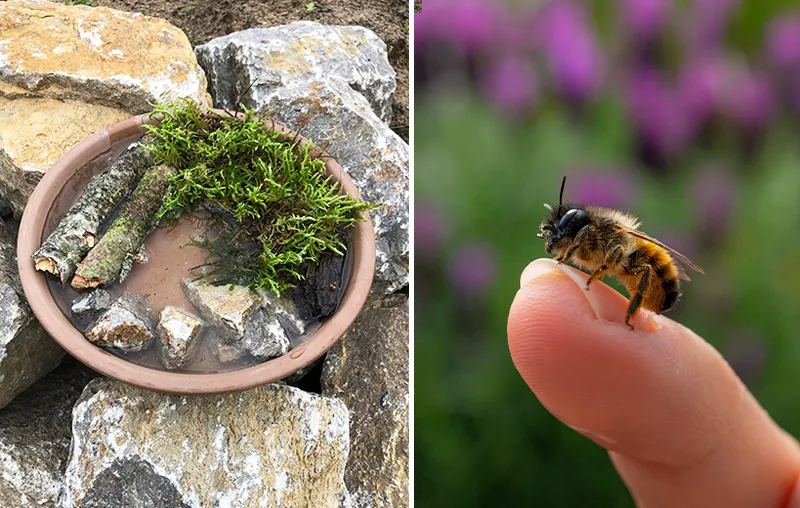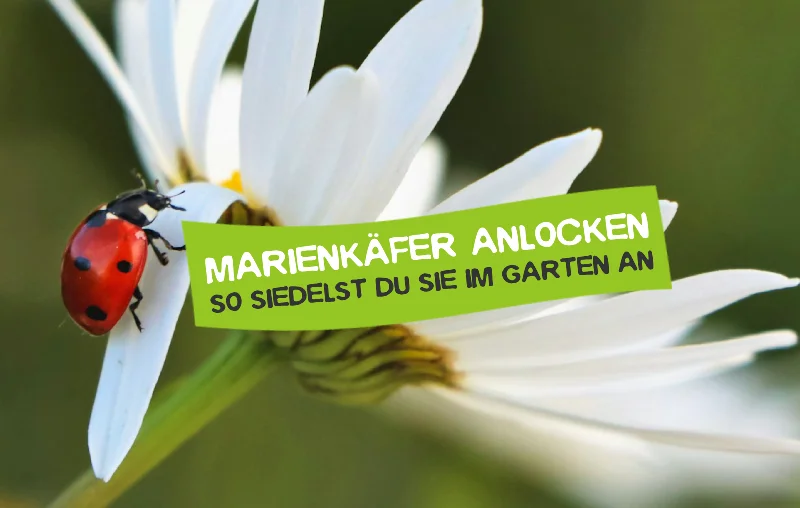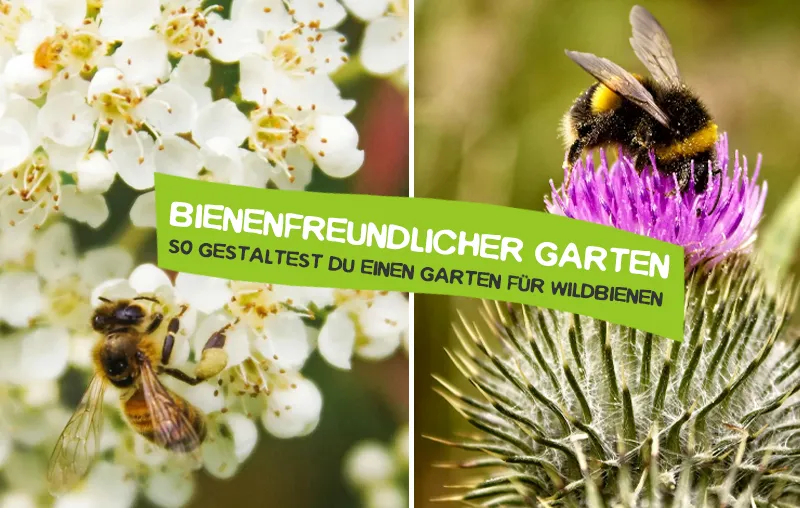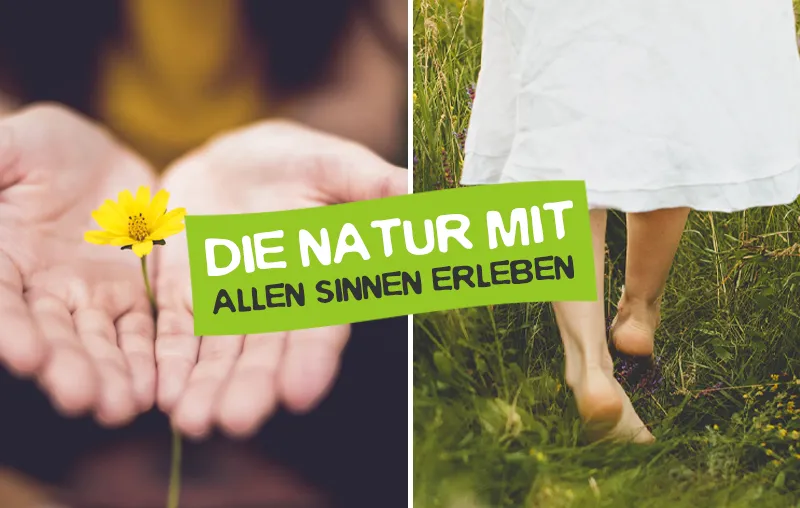Do you want to build a bee drinking trough and provide the bees with a watering hole? Then you've come to the right place! More and more people want to Counteract insect mortality and specifically promote the humming and buzzing in the garden.
In addition to native plants and ideal nesting opportunities, butterflies and not least the endangered wild bees need water to drink and cool off. But the "blood of the earth" can become scarce, especially in the hot summer months. Fortunately, this can be remedied with a simple DIY project.
In this article, I'll show you briefly and concisely why water sources are so important for bees and other insects - and how you can easily build your own bee drinking trough. Whether in the garden, on the patio or on the balcony - it's worth it! Let's go!
Here you can find a short overview in advance:
Reasons: Why do bees need water from a bee drinker?
Basically, all bees need water for their Metabolism. While honey bees also make it to the Cooling the hive and to the Production of feed juice and royal jelly for their larvae, wild bees use it primarily in the Building their nesting sites one.
Most bees can cover most of their water requirements with the nectar they consume. But the Climate Change and the Water Shortage also set the Nectar sources the plant world - and also water-supplying sources such as Honeydew are becoming rare.
In phases of drought the bees then naturally need other sources. It is therefore important to give the beneficial insects a helping hand and provide them with alternative water sources, such as a home-made bee drinker.
But you should also be personally motivated by the fact that many wild bee species are endangered and need our protection. Not least because the fascinating animals Pollinator of countless plants and their decline not only affects entire ecosystems, but also our Food security under threat.
Material: What do I need to build a water source for wild bees?

In order for the insects to use the bee trough later, it should be as natural as possible. So we try to create a recreate a natural pond on a small scale. 🙂
If you want to build a bee drinking trough, you really don't need much. All you need are a few natural materials that are both Safe access to water as well as a natural environment offer. There are no limits to your creativity.
Here I have you the things listedwhich I used in the construction of my bee drinking trough:
- Flower pot coaster (Ø min. 20 cm; available here in clay*and here a little more stylish in ceramic*)
- Pieces of wood or small branches
- Small stones
- Moss
- Water 😉
Instructions: How can I build a bee drinker myself?
Ready to design the bee drinking trough and offer the insects water? Great! Before we start, a few more Important tips and hints!
It is important to choose the right location for the bee trough. A warm place in the sunA well that is also protected from wind and rain is ideal. The drinking trough should also be as close to a wildflower meadow or a wild corner in garden so that the bees can find them easily and have short distances.
Use these now Step-by-step instructions for the construction of a popular bee drinking trough:
- Select bowl: Get one of those flat clay flowerpot coasters*. It serves as a water basin for your bee drinking trough. You can put the other materials in there.
- Place branches and stones inside: Now fill the bowl with small stones and branches. The material will later serve as a landing surface for bees, butterflies and other insects.
- Add moss: Next, add some moss to provide the insects with additional support. They often suck the water droplets that adhere to it directly.
- Pour in the water: Now pour the water into the saucer. Make sure that the material is not flooded so that the landing surface remains dry.
- Check regularly: Make sure the water is always topped up and kept clean to provide the bees with a constant source of water.
That's all! Not that complicated, is it? 😉
Tip: Into a bee friendly garden naturally also include native plants. You can also take a look at my lists of insect-friendly small trees and bee-friendly wild roses an.
Building a bee drinker, made easy!

Building a bee drinking trough costs (almost) nothing, is child's play and a great way to help the little garden dwellers too. All it takes is a few natural materials, the right place and your helping hand from time to time - and the water source for wild bees and other insects is ready.
The small do-it-yourself project also fulfills also a educational purpose. Why not build it together with your children, for example, so that you can promotes native biodiversity.
"If the bee disappeared off the surface of the globe, then man would have only four years of life left. No more bees, no more pollination, no more plants, no more animals, no more man."
Albert Einstein (more under Species protection quotes)
I hope that I have been able to motivate you to successfully build a bee drinking trough with this article. Do you have any questions, suggestions or other ideas for useful water sources to support the insect world? Then I look forward to your comment!
Stay close to nature and environmentally conscious,

PS: If you still have some creative energy left and want to do even more for bees and other insects, then next you can learn how to make a Building a sandarium or a species-rich Create a pile of stones. Good luck!





